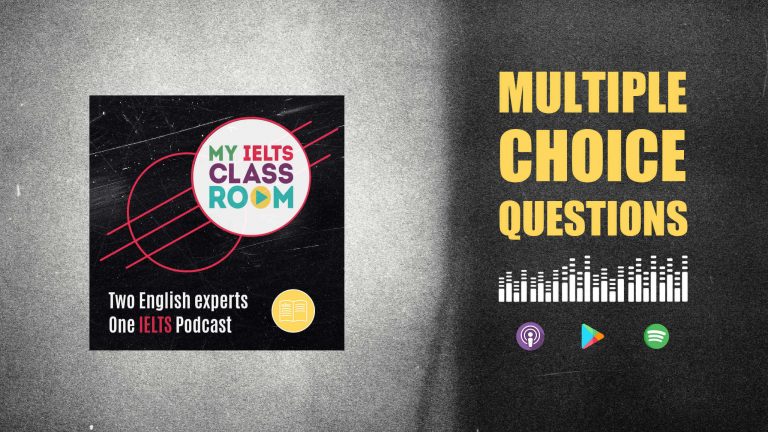
IELTS Reading Multiple Choice Questions
IELTS Reading Multiple Choice Questions
Hey! It’s time for another interactive lesson! Yes, after the popularity of our Headings Match, and True / False / Not Given episodes, we are back with another immersive podcast. Today, Nick and I look at IELTS reading multiple choice questions to show you the two best ways to approach this type of question, and four “examiner tricks” that you may not be aware of!
Plus, we will explain why this type of question is absolutely unlike any other in the test as it is important that you read the passage before you check the four possible answers. What? You are advising us to read without a purpose? Of course not! We just think that there is a better method! What is it? You will need to listen to find out!
Below, you can find a summary of the episode, which includes all of the links to useful materials and the times of each part of the discussion (so you can go directly to the part you want to listen to) 🚀
Subscribe to My IELTS Classroom podcast on Apple podcasts here ![]()
![]() Subscribe to My IELTS Classroom on Google podcasts here
Subscribe to My IELTS Classroom on Google podcasts here
Podcast Summary: IELTS Reading Multiple Choice Questions
00:00 – 05:42 – Introduction – we had a lovely letter from a listener who has passed her exam with flying colours.
05:43 – 11:00- The basic facts about IELTS Reading Multiple Choice Questions
Let’s start today’s lesson as always as looking at the basic facts about IELTS reading multiple choice questions:
- In reading multiple choice questions you are given a question stem and 4 possible answers. You must choose the ONE correct answer
- The questions always follow the order of the text and the questions will never target the same paragraph twice. However, you may find that some paragraphs are not targeted at all.
- The key words in the question stem will not help you to find the answer – you need to read for MEANING.
- IELTS reading multiple choice questions can target one sentence in a paragraph or information from the whole paragraph. This is why you will need to read the whole paragraph to locate the answer and 90% of the time skimming and scanning will not help you. This is particularly true for academic students who will most likely need to follow the logic of a whole paragraph to locate the answer, particularly in section 3.
11:01 – 23:56 – The two ways to approach IELTS Reading Multiple Choice Questions
1. Read the text to find the answer yourself. The main complaint students have about multiple choice questions is that they become confused by the 4 options given as the possible answer. Of course they do! The whole point of a “distractor” is to guide you away from the correct answer towards a wrong one! So, what is the solution? Don’t look at the possible answers!
Seriously, the hands down easiest way to approach IELTS reading multiple choice questions is to see if you can find the answer to the question YOURSELF before you look at the possible options. I know that this is probably the OPPOSITE of the advice that you have been given in the past, and for any other type of reading question like information match or headings, it would be a total disaster, but for multiple choice questions this is by far the best approach as you remove the chance of being tricked by the wrong answer!
Not sure? Then try this technique now with this question from a text from Cambridge GT 13 about Papyrus. Read the passage and see if you can answer this question IN YOUR OWN WORDS. Don’t skim or scan. Read from the top to UNDERSTAND.
What was the problem with using animal skins and wood strips for writing on?

Alright, have you got an answer? I think that this is a relatively simple one “animal skins and wood strips” are only mentioned in ONE sentence and it clearly says that they were “more flexible but less permanent”. There is only ONE problem here “less permanent” so that must be the answer. Now let’s look at the four options. Which one do you think is correct?

The answer is clearly “A” as “less permanent” is clearly a direct synonym for “do not last for a long time”. Easy, right? So why is it that 90% of my students (before they study with me) choose B? It’s because they see “difficult to store” and jump to the conclusion that this is the answer!
This is what happens when you skim and scan rather than read!
Yes, the text uses the words “difficult to store” but this is describing the mud blocks NOT the animal skins and wood straps. This is easy to see when you read properly and if you DO NOT LOOK AT THE POSSIBLE ANSWERS FIRST.
2. Eliminate the wrong answers. Of course, there are times when you cannot find the answer to the question in the text yourself. This is usually because the question does not provide enough detail for you to answer it, or you have a “sentence completion” multiple choice. In these circumstances, we still recommend that you read the question and understand the text BEFORE you look at the four possible answers.
Then, you can find the answer by a process of elimination. Let’s try this method with the second question from the passage. Again, try to answer the question using your own words (although you may find it harder this time!)
Why did papyrus manufacturers hammer the papyrus?

This time the answer is more difficult, right? All we can see here is the phrase “and hammered together”. Let’s look at the four options and see which one matches best:

A – remove the water? No, we are told that happens in the next stage. C – all the pith strips to be cut? No, that happens earlier in the process. D – to position the strips? No, they are already in position. So, that only leaves B – to join the layers of pith together. Yes, that is the answer! Even though it contains a key word and looks “too easy” that is the right choice.
So, when you are attempting multiple choice questions start by seeing if you can find the answer to the question yourself in the text BEFORE you look at the possible answers. If you can, great! If you can’t, then try to eliminate the “wrong” answers as you look for the correct one!
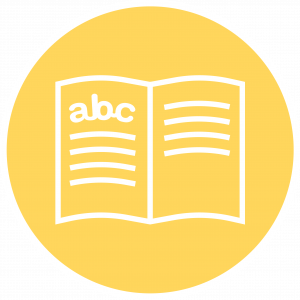
If you would like more support with reading, then you may wish to consider signing up for our 5-day intensive courses, which cover the skills and techniques you need to successfully approach every question in the exam.
They run once a month and there are separate courses for Academic and General Training- find out when the next one is here.
25:00 – END – Four things you should know about IELTS reading multiple choice questions
Alright, now that we know the basics about approaching IELTS reading multiple choice questions, let’s discuss some of the finer details.
1. Some IELTS reading multiple choice questions will require you to infer the answer The questions that we have already looked at are relatively simple in so much as they explicitly tell you the answer in the text. However, not all questions do this. Answer this question and then listen to us discuss why this is more difficult in the podcast episode.
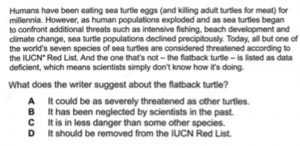
2. Some IELTS reading multiple choice questions contain possible answers that are “not given” – if you are an Academic student, you should be prepared for possible answers that look plausible, but for which there is not quite enough information in the passage for us to decide if thy are true or not. In other words, you should expect choices that are essentially “not given”. We look at this question as an example:

3. Some IELTS reading multiple choice questions have possible answers that are VERY SIMILAR. This is the oldest trick in the book and usually the way that exam writers try to hide “easy answers”. I know because I do this myself. If there is a question that too many students are answering correctly in pre-testing, I will try to make the four possible answers as similar as possible to make it harder for the student to decide between them.
We look at this example in the podcast – again, make sure you read the passage first before looking at the four possible answers. That is the key to success!
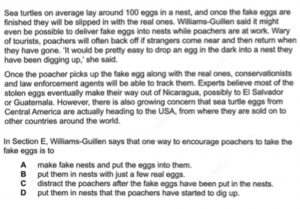
4. Some IELTS reading multiple choice questions require you to follow the argument in an ENTIRE paragraph. I have to say that these questions usually only appear in the Academic Reading Test and are among the most difficult. Look at this question as an example. As we will see in the episode, answering it means following a chain of referrants from the end of the paragraph back to the beginning. Have a go and then listen to see how you got on!
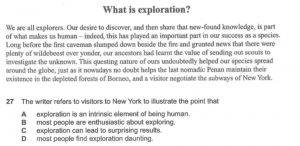
We hope your enjoyed our guide to IELTS reading multiple choice questions. If you did, leave a comment below or send us an email to let us know what you would like to hear next on the My IELTS Classroom podcast.
